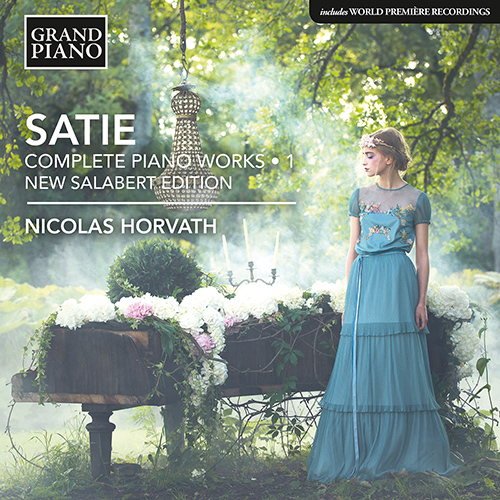
About this Release
“My first ever non-stop marathon performance of Satie's piano music took place in Honfleur and Perpignan back in 2011. It signalled the beginning of a long journey, since when I have worked closely with the most important Erik Satie experts on a very special project: to capture the spirit of Satie's music as it would have sounded in his day. Approaching Satie's complete piano oeuvre in chronological order, I recorded the first few volumes of this new cycle on an 1881 Érard piano. This survey of the urtext edition of Satie's music contains world premières of both newly discovered and recently corrected works, enhanced by in-depth musical analysis; a thoughtful biography containing recent additional material by Robert Orledge; plus a comprehensive iconography with rarely seen or unknown examples chosen by Ornella Volta.” — Nicolas Horvath
SATIE, ERIK (1866–1925)
Complete Piano Works • 1 (New Salabert Edition)
- Nicolas Horvath, piano
Always inventive and innovation-seeking, Erik Satie’s earliest works show traces of Chopin as an influence but he soon came to reject virtuosity and tradition, choosing instead to remain with the quintessentially French traits of clarity, precision, elegance and economy. Satie’s hauntingly beautiful floating melodies and modal tonalities are unforgettably compelling, combining bygone classical ages with Parisian sophistication. This landmark recording uses both a new and corrected edition of Satie’s music and Cosima Wagner’s own 1881 Erard piano, Satie’s instrument maker of choice.
Tracklist
|
1
Allegro (1884) (1884) (00:00:29)
|
|
2
Valse-Ballet (1885) (00:01:59)
|
|
3
Fantaisie-Valse (1885) (00:02:17)
|
|
4
Quartet No. 1 (sketch, 1886) () * (00:01:04)
|
|
5
Quartet No. 2 (sketch, 1886) () * (00:00:33)
|
|
4 Ogives (1886) (00:09:00 )
|
|
6
Ogive No. 1 (00:01:42)
|
|
7
Ogive No. 2 (00:02:22)
|
|
8
Ogive No. 3 (00:01:39)
|
|
9
Ogive No. 4 (00:01:44)
|
|
3 Sarabandes (1887) (00:09:00 )
|
|
10
Sarabande No. 1 (00:04:35)
|
|
11
Sarabande No. 2 (00:04:04)
|
|
12
Sarabande No. 3 (00:05:44)
|
|
3 Gymnopédies (1888) (00:15:00 )
|
|
13
Gymnopédie No. 1 (00:04:17)
|
|
14
Gymnopédie No. 2 (00:03:32)
|
|
15
Gymnopédie No. 3 (00:03:15)
|
|
16
Gnossienne No. 5 (1889) (00:03:28)
|
|
17
Chanson Hongroise (1889) (00:00:35)
|
|
3 Gnossiennes (1893) (00:06:00 )
|
|
18
Gnossienne No. 1 (00:04:55)
|
|
19
Gnossienne No. 2 (00:02:19)
|
|
20
Gnossienne No. 3 (00:02:55)
|
|
21
Pièce sans titre (1891), "Première pensée Rose + Croix" (1891) (00:00:53)
|
|
22
Gnossienne No. 4 (1891) (00:02:04)
|
|
23
Leit-motiv du Panthée (1891) (00:00:54)
|
|
3 Sonneries de la Rose+Croix (version for piano) (1892) (00:12:00 )
|
|
24
No. 1. Air de l'Ordre (00:04:04)
|
|
25
No. 2. Air du Grand Maître (00:05:03)
|
|
26
No. 3. Air du Grand Prieur (00:02:46)
|
|
27
Le Fils des Étoiles, Act I: Gnossienne No. 7 (1891) (00:04:15)
|
The Artist(s)
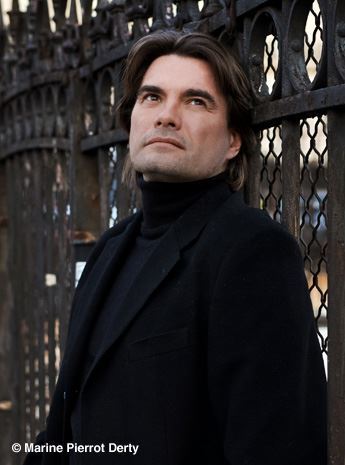 Nicolas Horvath began his music studies at Monaco’s Académie de Musique et de Théâtre Prince Rainier III and soon began to make an impression on a number of artists who would become his mentors. Aged 16 he caught the attention of the American conductor Lawrence Foster before coming to the notice of several distinguished international pianists, including Liszt specialist Leslie Howard. He is the recipient of numerous awards, including First Prize at both the Scriabin and the Luigi Nono International Competitions. He has become noted for hosting concerts of unusual length, sometimes lasting over twelve hours, such as the overnight performance of the complete piano music of Erik Satie at the Paris Philharmonie before a cumulative audience of 14,000 people. In 2019 he performed alongside Philip Glass at the same venue in a programme devoted to the American composer’s piano music. Horvath’s extensive and varied discography on Grand Piano includes the highly acclaimed Philip Glass solo piano music edition, Glassworlds; the complete piano works of Erik Satie; piano sonatas by the Estonian composer Jaan Rääts and music by the American experimental composer Alvin Lucier; Carl Czerny’s 30 Études; and lesser-known piano music by Claude Debussey, Anne-Louise Brillion de Jouy and Hélène de Montgeroult. Nicolas is a Steinway Artist.
Nicolas Horvath began his music studies at Monaco’s Académie de Musique et de Théâtre Prince Rainier III and soon began to make an impression on a number of artists who would become his mentors. Aged 16 he caught the attention of the American conductor Lawrence Foster before coming to the notice of several distinguished international pianists, including Liszt specialist Leslie Howard. He is the recipient of numerous awards, including First Prize at both the Scriabin and the Luigi Nono International Competitions. He has become noted for hosting concerts of unusual length, sometimes lasting over twelve hours, such as the overnight performance of the complete piano music of Erik Satie at the Paris Philharmonie before a cumulative audience of 14,000 people. In 2019 he performed alongside Philip Glass at the same venue in a programme devoted to the American composer’s piano music. Horvath’s extensive and varied discography on Grand Piano includes the highly acclaimed Philip Glass solo piano music edition, Glassworlds; the complete piano works of Erik Satie; piano sonatas by the Estonian composer Jaan Rääts and music by the American experimental composer Alvin Lucier; Carl Czerny’s 30 Études; and lesser-known piano music by Claude Debussey, Anne-Louise Brillion de Jouy and Hélène de Montgeroult. Nicolas is a Steinway Artist. The Composer(s)
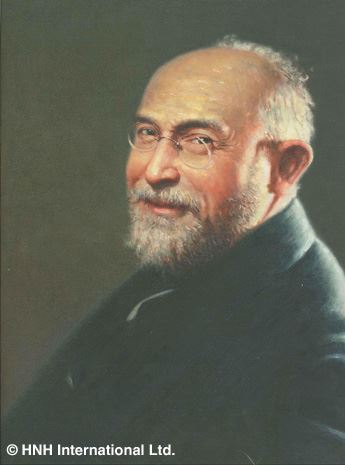 A French composer as eccentric in his way of life as in his music, Satie exercised considerable influence over some of his more distinguished contemporaries, including Debussy, Ravel and Poulenc, particularly through his tendency towards extreme simplicity. A number of his compositions have become very familiar to many, largely through their use in other contexts.
A French composer as eccentric in his way of life as in his music, Satie exercised considerable influence over some of his more distinguished contemporaries, including Debussy, Ravel and Poulenc, particularly through his tendency towards extreme simplicity. A number of his compositions have become very familiar to many, largely through their use in other contexts. Reviews
“…very well recorded. Everything was very well interpreted. Among the discoveries were the mesmerising mystical sounds of the Prélude du Nazaréen, as well as upsud. A future reference for this music.” – Musique classique & Co

“In all of these works, [Horvath] manages to distill and present all the attributes of the shy and lonely artist [Satie], with the piano as the medium for communicating this, based on simplicity, clarity, precision, elegance and economy of means.” – Ritmo
“Erik Satie’s earliest works show traces of Chopin as an influence but he soon came to reject virtuosity, choosing instead to remain with the French traits of simplicity, clarity, elegance and economy. This landmark recording by Nicolas Horvath uses a new edition played on Cosima Wagner’s own 1881 Erard piano, Satie’s instrument maker of choice.” – WFMT (Chicago)
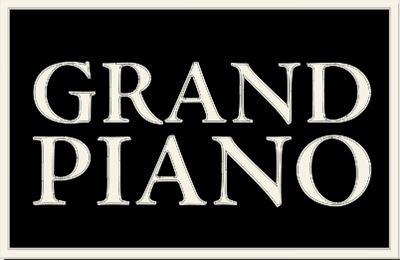
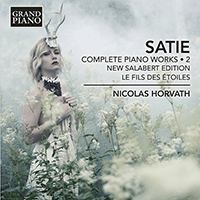
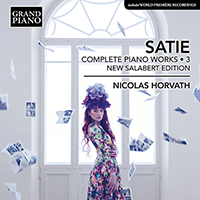

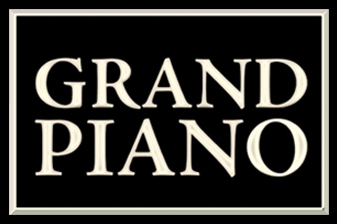 Grand Piano has gained a reputation for producing high quality recordings of rare keyboard gems. Dedicated to the exploration of undiscovered piano repertoire, the label specialises in complete cycles of piano works by many lesser-known composers, whose output might otherwise have remained unknown and unrecorded.
Grand Piano has gained a reputation for producing high quality recordings of rare keyboard gems. Dedicated to the exploration of undiscovered piano repertoire, the label specialises in complete cycles of piano works by many lesser-known composers, whose output might otherwise have remained unknown and unrecorded.






